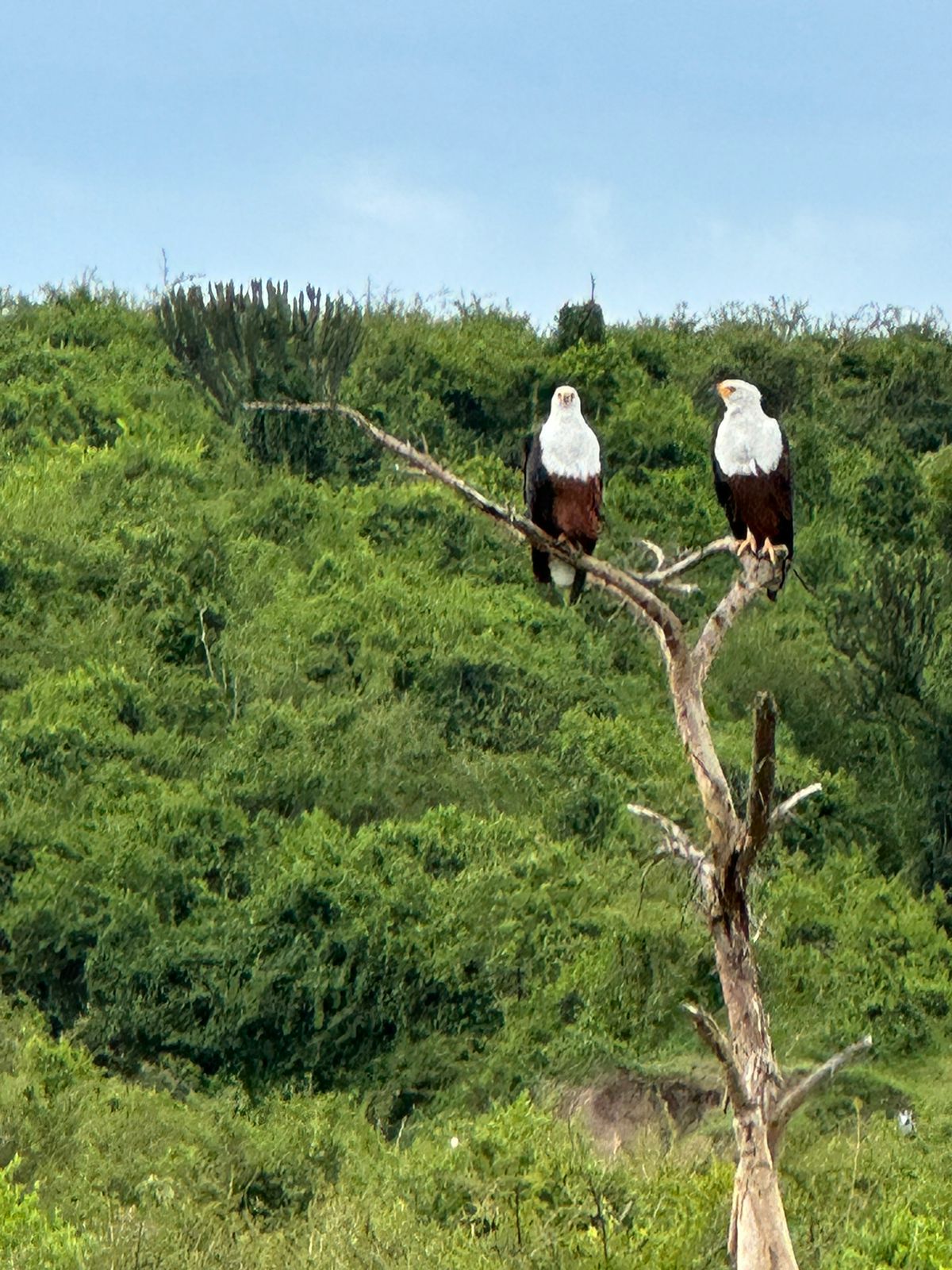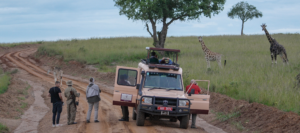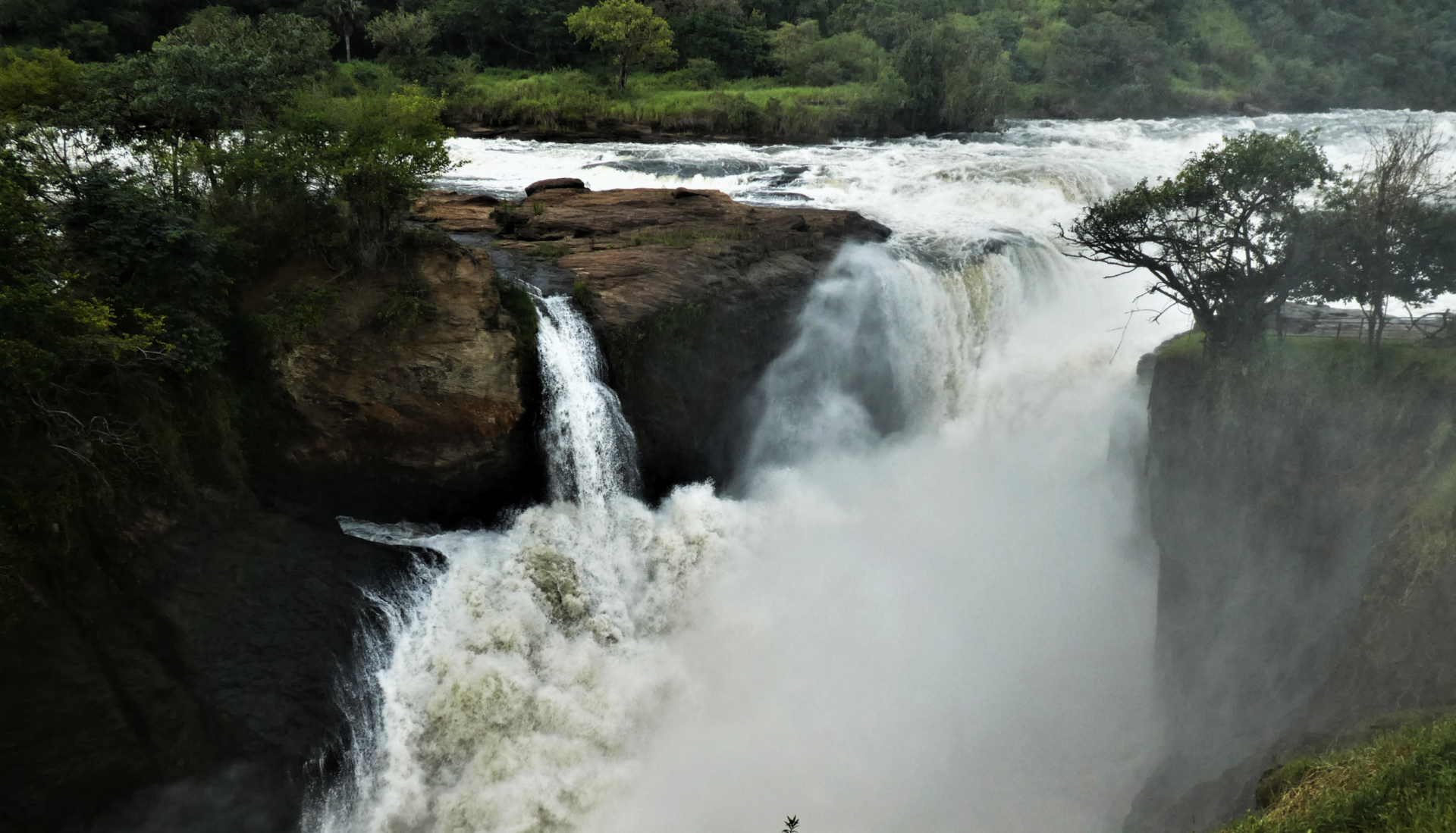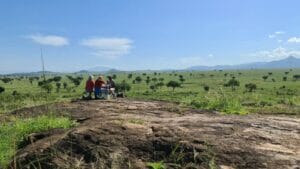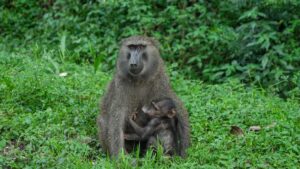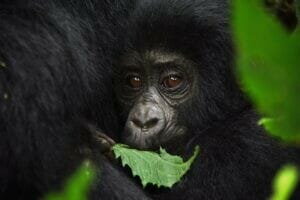Uganda, the Pearl of Africa, is not only home to breathtaking landscapes and diverse wildlife, but also to one of the continent’s most majestic and iconic birds – the African Fish Eagle. With its striking plumage and powerful call, spotting this magnificent bird in its natural habitat is an unforgettable experience for nature enthusiasts and birdwatchers alike.
But spotting the African Fish Eagle isn’t just about being in the right place at the right time; it also requires some expertise and careful observation. In the following section, we will provide you with valuable tips and tricks for spotting these birds. Whether it’s joining a guided birdwatching tour, knowing the essential equipment to bring along, or learning the behavioral signs to look out for, these insights will enhance your chances of a successful sighting.
So, get ready to embark on an adventure through the enchanting landscapes of Uganda, as we guide you to the best places to witness the awe-inspiring African Fish Eagle in all its splendor. Whether you’re a seasoned birdwatcher or a nature enthusiast looking to explore the wonders of Uganda’s wildlife, this blog post will be your ultimate guide to an unforgettable encounter with one of Africa’s most magnificent birds.
- Understanding the African Fish Eagle: A Brief Overview
- Best Time to See the African Fish Eagle in Uganda
- Top Locations to Spot the African Fish Eagle in Uganda
- Tips for Spotting the African Fish Eagle
- Conservation Status of the African Fish Eagle
- Book A Birding Tour With Kikooko Africa Safaris And See The African Fish Eagle in Uganda
Understanding the African Fish Eagle: A Brief Overview
The African Fish Eagle (Haliaeetus vocifer) is a large bird of prey that belongs to the family Accipitridae. With its striking appearance and distinct call, it has earned its reputation as the “voice of Africa.” This majestic bird is widely recognized as a symbol of power and grace, embodying the untamed beauty of the continent.
Physical Characteristics
The African Fish Eagle boasts a wingspan of about 2 meters (6.5 feet) and can weigh up to 3.6 kilograms (8 pounds). Its plumage is predominantly brown, with a white head and neck, and a distinctive chestnut-colored belly. The wings are broad and sturdy, enabling the bird to soar effortlessly through the sky.
One of the most captivating features of the African Fish Eagle is its piercing yellow eyes, which are surrounded by a striking yellow orbital ring. This feature not only enhances its appearance but also aids in its exceptional vision, allowing it to spot prey from great distances.
Distribution and Habitat
The African Fish Eagle is widely distributed across sub-Saharan Africa, including Uganda. It favors habitats near freshwater bodies such as rivers, lakes, and swamps, where it can find an abundant source of food. These birds are particularly prevalent in areas with large fish populations, as fish make up a significant portion of their diet.
Feeding Behavior
As the name suggests, the African Fish Eagle is an adept fish hunter. It will often perch on a tree branch overlooking the water, patiently scanning the surface for potential prey. Once it spots a fish near the water’s surface, it swoops down with remarkable speed and accuracy, using its sharp talons to snatch the fish from the water. It can catch fish weighing up to 2 kilograms (4.4 pounds), and sometimes even larger.
In addition to fish, the African Fish Eagle may also feed on other small aquatic animals, water birds, or carrion when the opportunity arises. This adaptability allows it to survive in different environments and ensures a varied diet.
Vocalizations
The unmistakable call of the African Fish Eagle is often described as a hauntingly beautiful sound that reverberates through the African wilderness. Its distinctive cry, often likened to a high-pitched, piercing whistle, is a territorial call used to proclaim its presence and assert dominance over its territory.
The male and female African Fish Eagles possess similar vocalizations, which they use to communicate with their mates and offspring. These calls play a crucial role in pair bonding and territorial defense.
Cultural Significance
Beyond its ecological importance, the African Fish Eagle holds cultural significance in many African societies. Its majestic presence and powerful call have made it a prominent figure in folklore and symbolism. In several African countries, the African Fish Eagle is featured on national emblems, stamps, and currency, representing strength, freedom, and national identity.
As we delve deeper into the world of the African Fish Eagle, we will uncover more fascinating insights into its behavior, preferred habitats, and the best times to observe this incredible bird in Uganda. So, let’s journey further into the enchanting realm of this iconic African species.
Best Time to See the African Fish Eagle in Uganda
When it comes to spotting the African Fish Eagle in Uganda, timing is key. Understanding the best time to visit for optimal sightings will greatly enhance your chances of encountering these majestic birds in their natural habitat. In this section, we will explore the various factors that influence the presence and visibility of the African Fish Eagle throughout the year.
Understanding the African Fish Eagle’s Behavior and Habitats
To determine the best time to see the African Fish Eagle, it is essential to familiarize yourself with its behavior and preferred habitats. These birds are most commonly found near freshwater bodies, such as lakes, rivers, and swamps, where they can easily access their primary food source – fish. Therefore, areas with abundant fish populations are more likely to attract African Fish Eagles.
Seasonal Changes Affecting Sightings
The presence and behavior of the African Fish Eagle can be influenced by seasonal changes in Uganda. Understanding these patterns will help you plan your visit accordingly. Here are some key factors to consider:
- Breeding Season: The breeding season of African Fish Eagles typically occurs between May and August in Uganda. During this time, the birds engage in elaborate courtship displays, including aerial acrobatics and territorial vocalizations. Observing these behaviors can be a remarkable experience, but it is important to note that the birds may become more elusive and focused on nesting activities, making sightings less frequent.
Rainy Season: Uganda experiences two rainy seasons – from March to April and from October to November. While the rains rejuvenate the landscape and bring an abundance of prey for the African Fish Eagle, they can also make birdwatching more challenging due to dense vegetation and limited visibility. However, the lush greenery and vibrant atmosphere during the rainy season can offer a unique and picturesque backdrop for birdwatching enthusiasts.
- Dry Season: The dry season, which falls between December and February and from May through October, is generally considered the best time for birdwatching in Uganda. During this period, water levels in lakes and rivers recede, concentrating fish populations in smaller areas and making it easier for African Fish Eagles to spot and catch their prey. Additionally, the dry season offers clearer skies and better visibility for birdwatchers.
Recommended Times for Birdwatching
Based on the factors mentioned above, the recommended times for birdwatching and maximizing your chances of spotting the African Fish Eagle in Uganda are:
- Dry season: From December to February and from June to September, when water levels are lower, and bird activity is at its peak.
- Early mornings and late afternoons: These times of the day are generally more active for birdlife, including the African Fish Eagle. The cooler temperatures and softer lighting also contribute to better birdwatching conditions.
It is important to note that wildlife sightings can never be guaranteed, as these are wild animals in their natural habitat. However, by planning your visit during the recommended times and being patient and observant, you increase your likelihood of witnessing the magnificent African Fish Eagle in all its glory.
In the next section, we will guide you to the top locations in Uganda where you can have the best opportunities for spotting the African Fish Eagle. So, let’s embark on a journey to these breathtaking destinations and get ready for an unforgettable birdwatching experience.
Top Locations to Spot the African Fish Eagle in Uganda
Uganda is blessed with an array of stunning landscapes and diverse ecosystems, providing ample opportunities to spot the African Fish Eagle in its natural habitat. In this section, we will explore the top locations across the country where you can have the best chances of encountering these magnificent birds. From national parks to lakeshores, these destinations offer breathtaking scenery and rich biodiversity, making them ideal for birdwatching enthusiasts.
Murchison Falls National Park
Located in northwestern Uganda, Murchison Falls National Park is a true haven for the African Fish Eagle. The park is named after the dramatic Murchison Falls, where the Nile River forces its way through a narrow gorge, creating a magnificent waterfall. The river and its surrounding areas provide an abundance of fish, attracting numerous African Fish Eagles.
To increase your chances of spotting these birds, take a boat safari along the Nile River or venture on a game drive to explore the park’s diverse habitats. With its vast savannah, riverine forests, and wetlands, Murchison Falls National Park offers a remarkable setting to observe the African Fish Eagle in action.
Queen Elizabeth National Park
Situated in southwestern Uganda, Queen Elizabeth National Park is renowned for its incredible wildlife diversity. Alongside iconic mammals like elephants, lions, and hippos, the park is home to a thriving population of African Fish Eagles. The park’s proximity to the immense Lake Edward and the Kazinga Channel provides an ideal habitat for these birds.
Embark on a boat cruise along the Kazinga Channel, and you’ll have the opportunity to witness African Fish Eagles perched on tree branches, scanning the water for fish. The park’s diverse ecosystems, including savannah, wetlands, and forests, offer a range of habitats to explore, increasing your chances of encountering these majestic eagles.
Lake Victoria
As the largest lake in Africa and the second-largest freshwater lake in the world, Lake Victoria is a prime location for birdwatching, including the African Fish Eagle. Its vast expanse provides a bountiful supply of fish, making it an attractive feeding ground for these birds.
Head to the shores of Lake Victoria, particularly in areas such as Entebbe, Jinja, and the Ssese Islands, to witness the African Fish Eagle in its natural element. Whether you’re strolling along the lakeshore, taking a boat trip, or visiting the numerous islands, keep your eyes peeled for these regal birds perched on tree branches or soaring through the sky.
Lake Mburo National Park
Located in western Uganda, Lake Mburo National Park is known for its stunning landscapes and diverse wildlife. The park is home to several lakes, including Lake Mburo, which serves as a vital habitat for the African Fish Eagle.
Explore the park on a game drive or take a boat trip on Lake Mburo to increase your chances of spotting these birds. The combination of the lake’s fish-rich waters and the park’s acacia woodlands and grassy plains provides an ideal environment for the African Fish Eagle to thrive.
These are just a few of the top locations in Uganda where you can have remarkable encounters with the African Fish Eagle. Each destination offers unique opportunities to observe these majestic birds in their natural habitats. So, pack your binoculars, venture into these captivating landscapes, and get ready to be captivated by the sight of the African Fish Eagle in Uganda.
Tips for Spotting the African Fish Eagle
Spotting the African Fish Eagle in its natural habitat can be an exhilarating experience. To increase your chances of a successful sighting, it’s important to be well-prepared and equipped with the right knowledge. In this section, we will provide you with valuable tips and insights to enhance your birdwatching adventure and maximize your opportunities to observe the African Fish Eagle in Uganda.
Guided Birdwatching Tours
One of the best ways to optimize your chances of spotting the African Fish Eagle is by joining a guided birdwatching tour. Expert local guides have extensive knowledge of the bird’s behavior, preferred habitats, and the best locations for sightings. They can lead you to prime spots and provide valuable insights into the species’ ecology and conservation.
Equipment for Birdwatching
Having the right equipment can significantly enhance your birdwatching experience. Here are some essential items to consider:
- Binoculars: Invest in a good pair of binoculars with a suitable magnification and field of view. This will allow you to observe the African Fish Eagle and other bird species from a distance without disturbing them.
- Camera and Telephoto Lens: If you’re interested in capturing stunning photographs of the African Fish Eagle, bring along a camera with a telephoto lens. This will enable you to capture detailed images even from a distance.
Field Guide and Birding Apps: Carry a field guide or use birding apps on your smartphone to help you identify different bird species, including the African Fish Eagle. These resources provide valuable information on plumage, behavior, and vocalizations, assisting you in accurate identification.
- Birdwatching Clothing: Wear neutral-colored clothing that blends with the environment and minimizes disturbance to the birds. Comfortable walking shoes, a hat, sunscreen, and insect repellent are also essential for a pleasant birdwatching experience.
Behavioral Signs to Look for
Being familiar with the behavioral signs of the African Fish Eagle can greatly increase your chances of spotting them. Keep an eye out for the following indicators:
- Perched on Trees: African Fish Eagles often perch on tall trees near water bodies, such as rivers or lakes, providing them with a vantage point to spot fish. Scan the treetops and shoreline for their distinctive silhouettes.
Soaring in the Sky: These birds are skilled aerial hunters and can often be seen soaring high above the water, scanning for potential prey. Look for their elegant flight patterns, with their wings held in a distinctive “V” shape.
Territorial Calls: The African Fish Eagle has a powerful and unmistakable call that can be heard over long distances. Listen for their vocalizations, which are often used for territorial displays or communication with their mates.
By being patient, observant, and knowledgeable about the African Fish Eagle’s behavior, you increase your chances of witnessing their remarkable presence in the wild.
In the next section, we will delve into the conservation status of the African Fish Eagle and the efforts being made in Uganda to protect this magnificent bird. So, let’s learn more about how we can contribute to their conservation and ensure their survival for future generations.
Conservation Status of the African Fish Eagle
The African Fish Eagle, like many other bird species, faces various threats to its survival. Understanding its conservation status is crucial in recognizing the importance of protecting these magnificent birds and their habitats. In this section, we will examine the conservation status of the African Fish Eagle and the efforts being made in Uganda to ensure its long-term survival.
Conservation Efforts in Uganda
Uganda has recognized the importance of conserving its rich avian biodiversity, including the African Fish Eagle. Efforts are underway to protect these birds and their habitats:
- Protected Areas: National parks and protected areas in Uganda play a vital role in conserving the African Fish Eagle and its habitats. These areas provide legal protection and management measures to safeguard the birds and their ecosystems.
Research and Monitoring: Ongoing research and monitoring efforts help gather essential data on the population trends, behavior, and ecology of African Fish Eagles. This information informs conservation strategies and helps identify priority areas for protection.
Habitat Restoration: Initiatives are being implemented to restore and protect degraded habitats, including wetlands and riverine ecosystems that are crucial for the African Fish Eagle’s survival. These projects aim to improve water quality, enhance fish populations, and provide suitable nesting sites.
Public Awareness and Education: Raising awareness among local communities, tourists, and stakeholders about the importance of protecting the African Fish Eagle is vital. Education programs and outreach activities promote understanding, appreciation, and sustainable practices to minimize negative impacts on the birds and their habitats.
Book A Birding Tour With Kikooko Africa Safaris And See The African Fish Eagle in Uganda
By working collectively and taking individual actions, we can contribute to the conservation of the African Fish Eagle, ensuring that future generations can continue to marvel at the sight of these majestic birds in Uganda’s wilderness.
With this, we conclude our comprehensive guide on where to see the African Fish Eagle in Uganda. We hope this information has inspired you to embark on a birdwatching adventure and appreciate the beauty of these remarkable birds in their natural environment.
Experience East Africa by booking a safari with Kikooko Africa Safaris, a locally owned and operated safari company based in Uganda.

